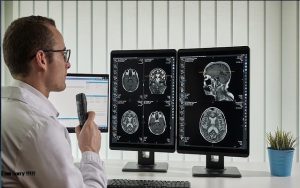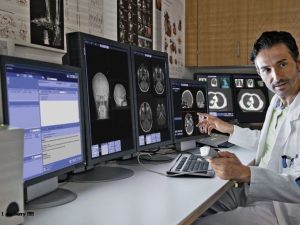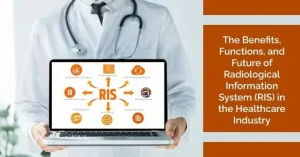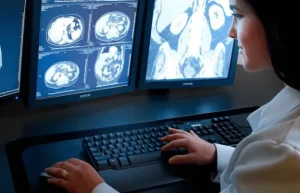Radiology Information System.
Do you run a sizable radiology practice and observe a drop in the number of patients? Or maybe your problem is being unable to maintain a competent working group. If these problems describe you, your dilemma can be addressed by using old ways to keep records. The need to modernize more and more health professionals is known as a post that is held by using a state-of-the-art Radiology Information System (RIS). Here are some of the ideas and warnings -some professionals and resistance to the Radiology Information System and the software.
What is the Radiology Information System?
Although the radiology information system was first introduced in the 1980s, many are still not familiar with it. Originally, a radiology information system is a software system used to manage medical data and images. It is employed to monitor imaging orders, radiology, and billing data. The system allows you to combine several functions in a wide system.
Introduction to radiology information systems and their meaning.
What is the Radiology Information System?
A radiology information system (RIS ) is a special radiology software solution that optimizes and helps control radiological departments and image centers. It helps to image and store the patient’s details in a single system, characterized by radiologists, doctors, as well as administrators for effective treatment of patients. In addition to imaging, complete RIS solutions with multiple front office functions, such as order placements, report generation, coding, and invoicing, have reduced the amount of necessary paperwork and manual functions.
By centralizing these main functions under a software, RIS provides real-time access to the patient records so that the health teams can improve patient care and coordination. A RIS not only keeps track of every stage of the radiological process, but it also keeps an organized database that makes it simple to access imaging registrations, view clinical reports, and keep an eye on treatment plans. This degree of access is very important, as radiologists should regularly analyze previous imaging tests and compare and evaluate the correct comparison.
The main component of an information system for radiology
There are many basic features of rice:
Patient management: A rice can trace the entire workflow to a patient in the radiology department; The radiology supplier can add pictures and reports to EHR, where they can be restored and seen by authorized radiological staff.
Planning: Rice allows employees to make appointments for both inpatient and outpatient patients.
Result reporting: A rice can generate a statistical report for a single patient, patients, or groups of processes.
The Role of RIS in Radiology Facilities.
The imaging center and radiology departments can use RIS to streamline everyday administrative tasks in a single system and encourage better collaboration between medical specialists. The main functionalities of RIs – such as patient planning and list administration, streamlined reporting, predetermined database search, and extensive workflow handling – ensure that patient care and imaging were originally coordinated, manual functions are reduced, and operational flow is improved. Usually, access is made through a desk or an online interface. RIS can be reached anytime and anywhere, which provides flexible support for health services.
To further increase efficiency and accuracy, some advanced radiology information systems (RIS) platforms have AI functions. These AI tools play an important role in adapting workflow and data management, such as identifying duplicate patients who identify items and help clean the functions as detergents, and more organized databases.
Additional AI functions include improved report accuracy, where the AI report helps the report generation by automatically filling standardized data fields, reducing errors, and ensuring stability in clinical reports.

Integration with existing systems.
One of the primary challenges in RIS implementation is achieving seamless integration with other key healthcare systems, such as Picture Archiving and Communication Systems (PACS), Electronic Health Records (EHRs), and specialized clinical imaging software. Integration for continuous data flow between the system is necessary to enable radiologists, doctors, and administrators to reach and share full, accurate patient information on platforms. This interoperability ensures coordinated care and reduces duplicate efforts in teams.
However, technical limitations can make integration challenging. The inheritance system, separate data format, and incompatible software standards often complicate the integration process. Anomalies between interoperability standards, such as Health Level Seven (HL7) and other data exchange protocols, may require adequate adaptation efforts to bridge the bridge between the interval. The time and money needed for RIS installation may grow as a result of these technical obstacles, which frequently require commitment to IT resources and knowledge. Without effective integration, RIS can lead to data silos and workflow inhibition, which prevents the informant on important patient information.
Provide compliance with regulatory standards
The complexity of meeting these regulatory requirements gives a new layer of difficulty in the RIS implementation. Facilities must configure RIS to support compliance by incorporating functions such as data encryption, audit paths, and role-based access control. Compliance often requires legal, compliance and cooperation between IT departments, and completes all regulatory standards to bring special competence to fulfill.
The results of non-transport are sufficient: punishment, legal obligations, and potential losses of the patient’s confidence. Therefore, continuous monitoring, regular audits, and system updates are important to maintain an obedient RIS infrastructure and reduce potential risks.
User adoption and exercise difficulties
A third important challenge in the RIS implementation is to provide effective user adoption and provide adequate training for employees. Radiological departments are very dependent on RI for necessary daily operations, such as patient care, making it important to maintain the quality of planning, medical imaging management, and reporting, and effective system service.
However, the introduction of a new RIS can interfere with established work float solutions and can withstand resistance from employees who are used to well-known methods. Employees may feel hesitant or even resistant to learning a new system, especially if they view it as complex or takes time to adapt to it.
Data migration and system infection.
A new RIS often requires extensive data for infection, including patient records, imaging history, and clinical information. This process can be complicated, for example, with risks such as loss of data or corruption due to differences in formats between data structures and systems. Functions should manage the necessary shutdown for data and testing, balanced regular operation, in need of ensuring accuracy and continuity in patient care. Without careful planning, migration of data can be a long, disruptive process that affects workflow and patient services.

Adaptation needs and limited flexibility.
Workflows in health care are frequently distinct and call for flexibility and RIS platform adaptation. However, many RIS systems lack adaptability to fully meet these specific requirements, forcing the functions to adjust their operation to fit the system instead of the other way around. Limited customization options can cause disability and disappointment among employees, as RIS may lack characteristics or workflows required for their daily operations. This stiffness of the system can reduce productivity and require expensive modifications or solutions to reduce the total value of RIs.
Vendor Solutions for Overcoming RIS Challenges
Adaptable features for spontaneous integration
Integrating RIS with other important health care systems, such as PACs (image archive and communication system) and EHRS (electronic health records), is important for data continuity and extensive patient care. However, the variation in data formats and different standards makes integration challenging. To address this, several advanced RIS platforms adopt interoperability standards such as Health Level Seven (HL7) and Fast Healthcare Interoperability Resources (FHIR), which create standardized medical data exchange protocols, increase compatibility, and reduce integration complications. According to a study published in the Journal of Digital Imaging, the application of HL7 improves RIS standards in RIS Integration Powerful data stability and reducing errors, leading to more effective clinical workflows.
Health services can use an integrated solution such as Omegai, which supports HL7, FHIR, and API connections, ensuring even data flow and communication in platforms and applications. By connecting to the existing health service infrastructure, the Omegai department for radiology is focusing on providing patient care free of technical interactions. Order a demo with our experts to look at your surroundings and find out how it can streamline your RIS integration requirements.
Compliance equipment provided by RIS suppliers
Health care compliance is not perfect, especially regarding privacy and security standards for data such as HIPAA in the United States, PIPEDA in Canada, and GDPR in Europe. To accommodate these strict requirements, the Radiology Information System (RIS) provides sellers with direct match equipment on their platforms. Features such as audit paths, user access control, and encryption help facilities to match regulatory standards and protect patient data. These compliance properties not only reduce the risk of data violations but also create patient confidence in convenient engagement for safe care.
Seller Help and Training Program
Applying effective use of RIS technology often leads to challenges due to limited training and inconsistent support. Extensive seller support is necessary to solve these problems and promote smooth, more efficient system use.
Research from the Office of the National Coordinator for Health Information Technology suggests that the health facilities that receive frequent merchant support reports have high user satisfaction and better productivity. Quality training enables employees to navigate in RIs skillfully, which reduces both user errors and learning conditions, and increases the general workflow efficiency.
Important aspects of merchant support include sewn workouts, available documentation, and responsible customer service. Radiology information system providers offer specific training for a functional workflow and help regular check-in users build confidence in using technology during implementation. Users allow manual, fast reference guides and online auxiliary centers to allow employees to solve general problems independently, and promote both efficiency and self-sufficiency among users.
Ramsoft is dedicated to providing wide, available support to ensure a spontaneous user experience from day one. Many channels provide 24/7 assistance – including phone, live chat, SMS, and WhatsApp – Ramsoft ensures that the health teams consistently have access to expert guidance. Through the community portal, users can open support tickets, use detailed documentation, and use a variety of self-service resources designed to strengthen and increase system efficiency.

Flexible customization options
A radiology information system must be suitable for meeting unique workflows for each health system and operating requirements. Mobile imaging centers, multi-launch clinics, and special clinical centers all have different requirements from conventional from changes to different staffing and rapid purposes. Flexible RIS facilities make important parts fit their workflows for important parts such as the user interface, data fields, and reporting templates. This ensures that the system works well with daily operation.
Custom ROSE solutions of Ramsoft are designed to support all types of image centers, from low-volume mobile services, up to high-trinks, up to high-trinity, each system to configure workflow, templates, and interfaces are able to do the interface best for their unique needs.
In addition, for example, facilities increase, Ramsoft allows them to spontaneously addition of new users without extra fees. This flexibility streamlines not only daily functions but also ensures that, as demand is expanded, the image center can focus on providing high-quality patient care without worrying about costs.
Data migration solution
Data Migration from Heritage Systems presents a significant challenge for many health facilities, with a serious concern during transmission, including loss of data or risk of corruption. To handle this, advanced sellers provide structured migration support through devices as standardizing and ensuring data formats through the migration process. By using phased migration options, features can move important data to stages, reduce shutdowns, and ensure continuity of operations.
With systems such as Ramsoft’s Omegai, health services can benefit from strong integration protocols such as FHIR and HL7, which protect data integrity and security. Ramsoft handles the entire migration process, coordinates directly with previous suppliers, and configures data transfer to reduce shutdown. Most customers are completely again of hours and ensure a smooth, safe transition.
Mark Stevens, Chairman and COO for Premier Radiology Services, shares their experience with uninterrupted distribution of Ramsoft: “Ramsoft is unique to work with the team. We can spin customers quickly – within four hours, really, really, distribution and easily work pace.
General challenges in implementing information systems for radiology.
The use of a radiology information system (RIS) provides transformation ability for imaging centers and radiological departments, enables centralized radiology data management, well-organized workflow, and improved patient care. However, the road is often characterized by important challenges for successful RIS distribution.
Health services often have complications in five important areas: Existing IT systems for health care, regulatory compliance, user adoption, data discharge, and system infection and integration with adaptation requirements and limited flexibility. Each of these obstacles should be addressed effectively to ensure a smooth transition, maximize operating benefits, and prevent costly disruption.
The Benefits of Using a Radiology Information System.
The patient records are very effective. Better efficiency is possibly the main benefit of a radiology information system. For example, finding computer-controlled items, entering data, and creating reports from the patient’s information is much easier and faster than sorting through paper mounds. Worse, trying to find information can be like looking for a needle in a historical when the paper task is disorganized.
Also, there is less chance of making mistakes when using RIS software.
You save time. New patient registration can consume a lot of time when you are forced to go through a bunch of paper documents associated with a clipboard. Think about how to take information so you save time.
It is easy to communicate with other doctors or to mention doctors. When using RIS software, your interaction is improved with doctors and their EHR (Electronic Health Records) systems. Because all the relevant details and results of your patients are inherent in the system, other doctors who take care of your patients can easily reach the same information.
By using RIS software, you are more likely to refer to your patients and mention doctors.
You are paid quickly. The ability to verify a patient’s insurance status before their scheduled medical appointments is another significant benefit of utilizing a radiology information system.
Patients receive high-quality care. Not only can you cut prices with software for a radiology information system, but your patients will also benefit from it. By accelerating the patient’s information, your patients can participate more effectively, in addition can quickly participate.
The Drawbacks

Conversely, the Radiology Information System has certain drawbacks. For example:
RIS software is more favorable for behavioral health, radiology, and laboratory offices instead of small, single-doctor practices, as the cost of software may be higher than assigned in the budget.
Safety can be problematic, for example, while presenting any other type of new computer system in the network. This is why it is important that your system is properly safe to prevent hackers from compromising RIS.
It may take time to learn the system. Make sure your employees are instructed on how to use the software correctly and realize how errors are likely to occur before.
Other Considerations and Warnings
Before deciding to use the Radiology Information System, you should carefully consider all professionals and opposition.
If you decide to use the software, be sure to train your employees and employees well, which means separating the necessary resources and time.
Check to ensure your software vendor will update the software from time to time.
One way security can be compromised, clicking on text messages or links in e -e-posts with disastrous malware that can damage your system.
As you can see, the radiology information system and its software can be a large asset for a radiology department. They make everything from documentation to reporting and invoicing run smoothly, faster, and more efficiently.

